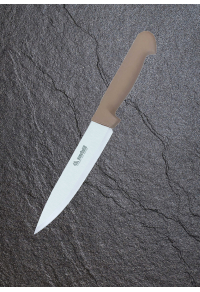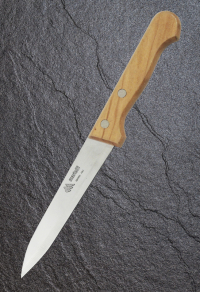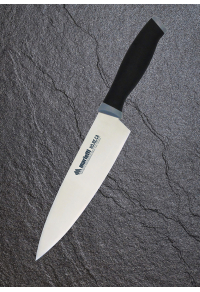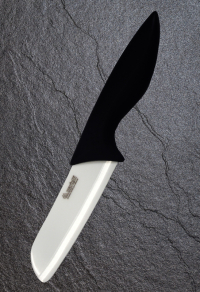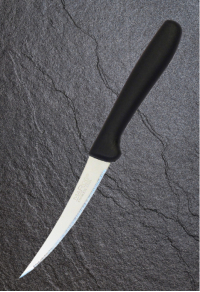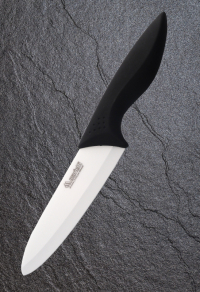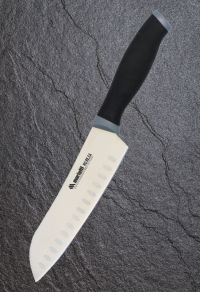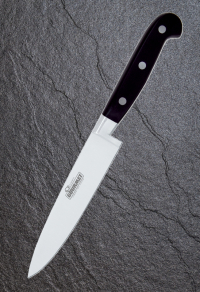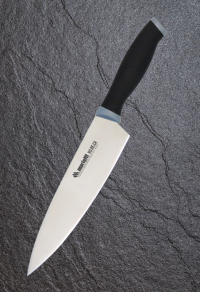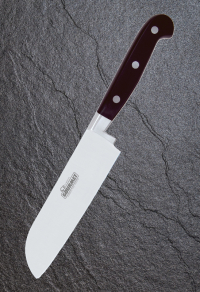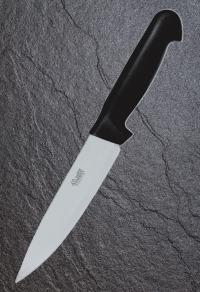
Knives
Subcategories
-
copy of Knife CUCINA -...
Together with the knife for vegetables it is probably the most used, as it can be used on a wide variety of foods and for a long series of operations. For example, it is able to chop, chop, reduce into cubes and slice meat, fish and vegetables.
-
Knife CUCINA
Together with the knife for vegetables it is probably the most used, as it can be used on a wide variety of foods and for a long series of operations. For example, it is able to chop, chop, reduce into cubes and slice meat, fish and vegetables. -
copy of Knife CUCINA 1232TP
In the kitchen we often find ourselves working cuts of meat of different sizes and we need to separate the bones from the meat. DEBONING knives cater to this need: they can have a STRAIGHT or slightly CURVED blade to absorb the different types of cuts and shapes of the animals, making the preparation of the meat easier.
-
Knife SANTOKU - cod. 134CZ
The Santoku knife represents the Japanese equivalent of the European chef's knife (CHEF KNIFE). Characteristic Japanese knife used to cut and chop vegetables. For this operation - in fact - Western cooks use the knife called CHEF KNIFE The big difference between the two blades is that the carving knife is designed so that the tip always remains in contact with the cutting board, while the Santoku is used as a small cleaver and the tip always comes off the cutting board. -
TOMATO - cod. 45MTS
Spearhead vegetable knife with 9.5 cm micro-serrated blade, available in:
Blister da 6 pcs.
Card 12 pcs.
Bulk
Available colors:
-
Knife CUCINA - cod. 132CZ
Together with the knife for vegetables it is probably the most used, as it can be used on a wide variety of foods and for a long series of operations. For example, it is able to chop, chop, reduce into cubes and slice meat, fish and vegetables. -
Knife SANTOKU 1235TP
A Santoku has a blade quite similar to a carving knife and is the Japanese equivalent of a chef's knife. Since it is a good idea to have a knife (and a cutting board) for raw food and a knife (and a cutting board) for cooked foods, the second carving knife can be a Santoku so you have the chance to try this type of blade too. The big difference between the two blades is that the carving knife is designed so that the tip always remains in contact with the cutting board, while the Santoku is used as a small cleaver and the tip always comes off the cutting board.
-
Knife CUCINA - cod. 2006
Together with the knife for vegetables it is probably the most used, as it can be used on a wide variety of foods and for a long series of operations. For example, it is able to chop, chop, reduce into cubes and slice meat, fish and vegetables. -
Knife CUCINA 1232TP
In the kitchen we often find ourselves working cuts of meat of different sizes and we need to separate the bones from the meat. DEBONING knives cater to this need: they can have a STRAIGHT or slightly CURVED blade to absorb the different types of cuts and shapes of the animals, making the preparation of the meat easier.
-
Knife CUCINA 1233TP
In the kitchen we often find ourselves working cuts of meat of different sizes and we need to separate the bones from the meat. DEBONING knives cater to this need: they can have a STRAIGHT or slightly CURVED blade to absorb the different types of cuts and shapes of the animals, making the preparation of the meat easier.
-
Knife SANTOKU - cod. 2016
The Santoku knife represents the Japanese equivalent of the European chef's knife (CHEF KNIFE). Characteristic Japanese knife used to cut and chop vegetables. For this operation - in fact - Western cooks use the knife called CHEF KNIFE The big difference between the two blades is that the carving knife is designed so that the tip always remains in contact with the cutting board, while the Santoku is used as a small cleaver and the tip always comes off the cutting board.
-
Knife CUCINA - cod. 131A
Together with the knife for vegetables it is probably the most used, as it can be used on a wide variety of foods and for a long series of operations. For example, it is able to chop, chop, reduce into cubes and slice meat, fish and vegetables.















